#Food Service Packaging Market Research
Explore tagged Tumblr posts
Text
#Food Service Packaging Market#Food Service Packaging Market Trends#Food Service Packaging Market Growth#Food Service Packaging Market Research#Food Service Packaging Market Report
0 notes
Text
Grocery Store - Venkatesh Kirana
Great! If your blog is focused on grocery stores, there are many directions you can take depending on your target audience and the message you want to convey. Here’s a structured approach you can follow to write a detailed and engaging blog post:
Blog Title Ideas:
"A Shopper’s Guide: How to Make the Most of Your Grocery Store Visit"
"Behind the Aisles: The Hidden Secrets of Your Local Grocery Store"
"Healthy Grocery Shopping: Tips for Filling Your Cart with Nutritious Options"
"The Evolution of Grocery Stores: From Local Markets to Online Shopping"
"Sustainability at Your Local Grocery Store: How You Can Make a Difference"
Blog Structure & Key Points:
1. Introduction:
Start with a hook: You could start by highlighting how essential grocery stores are to daily life. Maybe mention the rise of grocery shopping trends, or how people have shifted between in-store and online shopping in recent years.
Why it matters: Explain why grocery shopping is important—not just for stocking up on essentials, but for making healthy and sustainable choices.
2. The Importance of Grocery Stores in Our Communities:
Cultural significance: Discuss how grocery stores serve as community hubs. They aren’t just places to buy food; they often provide local products, foster connections, and promote community well-being.
Economic role: Mention how grocery stores contribute to the local economy by providing jobs and supporting local farmers or small businesses.
3. Types of Grocery Stores:
Traditional grocery stores: Chain supermarkets, local grocers, etc.
Specialty stores: Organic markets, international grocery stores, health food stores.
Online grocery stores: How the convenience of ordering online has impacted traditional grocery shopping.
4. Grocery Shopping Tips:
Budget-friendly tips: How to make the most of your budget when grocery shopping (e.g., using coupons, buying in bulk, planning meals ahead of time).
Health-conscious shopping: Discuss tips for picking healthy products like fresh produce, whole grains, and organic items.
Sustainable choices: Encourage shoppers to choose reusable bags, avoid excessive plastic, and support local or eco-friendly brands.
5. The Impact of Technology on Grocery Stores:
Self-checkouts and automation: How technology is making the grocery shopping experience faster and more efficient.
Online shopping and delivery services: Discuss how services like curbside pickup and home delivery are changing the way people shop.
Smart grocery shopping apps: Highlight apps that help with shopping lists, comparing prices, or finding discounts.
6. The Future of Grocery Stores:
Trends to watch: You can mention growing trends like plant-based products, alternative protein sources, and more environmentally friendly packaging options.
Innovation in grocery stores: Explore how stores are innovating, such as the rise of cashier-less stores (e.g., Amazon Go), or the integration of AI to personalize shopping experiences.
7. Conclusion:
Recap the significance: Summarize why grocery stores are more than just places to buy food.
Call to action: Encourage your readers to be mindful when grocery shopping—whether it’s about supporting local businesses, choosing healthier options, or reducing waste.
Additional Ideas:
Include a personal touch: If you shop at a specific grocery store, share your experiences, favorite sections, or unique finds.
Visuals: Include images of grocery aisles, products, or grocery store trends to make the post more engaging.
Statistics or research: Incorporating facts about grocery shopping behaviors or the impact of grocery stores on the environment can make your blog post more informative.
If you have a specific focus within your blog topic, feel free to share it, and I can help you refine the post further!
3 notes
·
View notes
Text
Thailand Board of Investment
The Thailand Board of Investment (BOI), established in 1966, serves as a vital gateway for foreign businesses seeking to invest and establish a foothold in the Southeast Asian nation. Acting as a one-stop shop, the BOI offers a range of incentives and support mechanisms to make Thailand an attractive and competitive investment destination.
Who Benefits from the BOI?
The BOI's programs target a broad spectrum of foreign investors, including:
Manufacturers: Companies engaged in the production of goods, particularly those aligned with Thailand's focus industries (like automotive, electronics, and food processing).
Technology Companies: Businesses involved in areas like software development, biotechnology, and digital innovation are highly encouraged.
Service Providers: The BOI welcomes foreign companies offering services in sectors like healthcare, tourism, and logistics.
What Incentives Does the BOI Offer?
The BOI provides a compelling package of incentives to attract foreign investment. These benefits can include:
Corporate Income Tax Exemptions: Partial or complete exemption from corporate income tax for a set period.
Import Duty Exemptions: Reduced or waived import duties on machinery, raw materials, and technology crucial for business operations.
Tax Breaks on Investment Costs: Incentives to encourage investment in research and development, infrastructure development, and employee training.
Simplified Business Registration: The BOI streamlines the business registration process for promoted companies.
Work Permit Facilitation: Assistance in obtaining work permits for foreign skilled workers needed for the project.
Focus Industries and Thailand's Development Goals
The BOI's promotional programs strategically align with Thailand's national development goals. By prioritizing industries like advanced manufacturing, digital technology, and environmentally friendly practices, the BOI aims to:
Drive Economic Growth: Attract foreign investment that fosters job creation and boosts Thailand's export capabilities.
Enhance Technological Advancement: Encourage technology transfer and innovation to elevate Thailand's industrial competitiveness.
Promote Sustainable Development: Support businesses that implement environmentally responsible practices and contribute to a greener future for Thailand.
How to Apply for BOI Promotion
Foreign businesses can apply for BOI promotion by submitting a detailed proposal outlining their investment project, including the nature of the business, target market, and projected economic benefits to Thailand. The BOI provides clear guidelines and application procedures on their website https://www.boi.go.th/en/index/.
Investing in Thailand's Future
The Thailand Board of Investment presents a compelling proposition for foreign businesses seeking to expand their reach in Southeast Asia. With its attractive incentives, strategic focus, and commitment to development, the BOI paves the way for a successful and mutually beneficial partnership between foreign investors and Thailand's growing economy.
2 notes
·
View notes
Text
Global top 13 companies accounted for 66% of Total Frozen Spring Roll market(qyresearch, 2021)
The table below details the Discrete Manufacturing ERP revenue and market share of major players, from 2016 to 2021. The data for 2021 is an estimate, based on the historical figures and the data we interviewed this year.
Major players in the market are identified through secondary research and their market revenues are determined through primary and secondary research. Secondary research includes the research of the annual financial reports of the top companies; while primary research includes extensive interviews of key opinion leaders and industry experts such as experienced front-line staffs, directors, CEOs and marketing executives. The percentage splits, market shares, growth rates and breakdowns of the product markets are determined through secondary sources and verified through the primary sources.
According to the new market research report “Global Discrete Manufacturing ERP Market Report 2023-2029”, published by QYResearch, the global Discrete Manufacturing ERP market size is projected to reach USD 9.78 billion by 2029, at a CAGR of 10.6% during the forecast period.
Figure. Global Frozen Spring Roll Market Size (US$ Mn), 2018-2029

Figure. Global Frozen Spring Roll Top 13 Players Ranking and Market Share(Based on data of 2021, Continually updated)

The global key manufacturers of Discrete Manufacturing ERP include Visibility, Global Shop Solutions, SYSPRO, ECi Software Solutions, abas Software AG, IFS AB, QAD Inc, Infor, abas Software AG, ECi Software Solutions, etc. In 2021, the global top five players had a share approximately 66.0% in terms of revenue.
About QYResearch
QYResearch founded in California, USA in 2007.It is a leading global market research and consulting company. With over 16 years’ experience and professional research team in various cities over the world QY Research focuses on management consulting, database and seminar services, IPO consulting, industry chain research and customized research to help our clients in providing non-linear revenue model and make them successful. We are globally recognized for our expansive portfolio of services, good corporate citizenship, and our strong commitment to sustainability. Up to now, we have cooperated with more than 60,000 clients across five continents. Let’s work closely with you and build a bold and better future.
QYResearch is a world-renowned large-scale consulting company. The industry covers various high-tech industry chain market segments, spanning the semiconductor industry chain (semiconductor equipment and parts, semiconductor materials, ICs, Foundry, packaging and testing, discrete devices, sensors, optoelectronic devices), photovoltaic industry chain (equipment, cells, modules, auxiliary material brackets, inverters, power station terminals), new energy automobile industry chain (batteries and materials, auto parts, batteries, motors, electronic control, automotive semiconductors, etc.), communication industry chain (communication system equipment, terminal equipment, electronic components, RF front-end, optical modules, 4G/5G/6G, broadband, IoT, digital economy, AI), advanced materials industry Chain (metal materials, polymer materials, ceramic materials, nano materials, etc.), machinery manufacturing industry chain (CNC machine tools, construction machinery, electrical machinery, 3C automation, industrial robots, lasers, industrial control, drones), food, beverages and pharmaceuticals, medical equipment, agriculture, etc.
2 notes
·
View notes
Text
Blog Post: Bringing Pet Paradise Boutique to Life - Our Operations Plan
Welcome to the Pet Paradise Boutique blog! Today, I’m excited to share the operations plan and how we plan to bring the premium pet products to market within the next six weeks. This journey involves careful planning, strategic purchasing, and a clear vision for launching the business successfully.
Operations Plan Overview
Purchasing Products: At Pet Paradise Boutique, thegoal is to offer high-quality, organic pet treats and personalized accessories that discerning pet owners will love. Here’s how i plan to source the products:
Organic Pet Treats: 1. will partner with local organic pet treat manufacturers and wholesalers. Initial research has identified several reputable suppliers who offer bulk purchasing options at competitive prices.
To ensure timely delivery, we’ve established communication with these suppliers and confirmed their ability to meet our initial demand within the next four weeks.
Personalized Accessories:
For personalized pet accessories, such as collars and tags, we will source customizable items from specialized manufacturers. These suppliers offer fast turnaround times for personalization, ensuring we can deliver unique products quickly.
By ordering a small initial batch, we can manage inventory effectively while gauging customer preferences and demand.
Bringing the Product to Market
With our products sourced and suppliers confirmed, the final six weeks of the course will focus on bringing Pet Paradise Boutique to market. Here’s our step-by-step plan:
Weeks 1-2: Website and Branding
Website Development: Finalize the user-friendly website where customers can browse products, make purchases, and book grooming services. We’ll use platforms like Shopify or Wix for easy setup and professional appearance.
Branding: Develop a cohesive brand identity, including a logo, color scheme, and packaging design that reflects our premium offerings.
Weeks 3-4: Marketing and Promotion
Social Media Campaigns: Launch targeted campaigns on Instagram and Facebook to build awareness and attract potential customers. Engage followers with contests, giveaways, and pet-related content.
Local Outreach: Participate in local pet events and markets to showcase our products and interact with pet owners directly. Distribute flyers and business cards to spread the word.
Weeks 5-6: Sales and Customer Engagement
Online Sales Launch: Officially open our online store for business. Monitor website traffic and sales closely, making adjustments as needed.
Customer Feedback: Encourage early customers to leave reviews and provide feedback. Use this input to refine our products and services.
Team Roles and Responsibilities
If working within a group, here’s how we’ll divide responsibilities:
Project Manager: Oversee overall operations, ensure deadlines are met, and manage supplier relationships.
Marketing Specialist: Handle social media campaigns, local outreach, and customer engagement.
Web Developer: Build and maintain the website, ensuring a smooth shopping experience for customers.
Product Manager: Manage inventory, coordinate with suppliers, and ensure product quality.
Licenses and Permits
Operating Pet Paradise Boutique may require certain licenses and permits, including:
Business Registration: Ensure the business is registered with local authorities in Kingston, Ontario.
Food Safety Compliance: Adhere to regulations for selling pet food, including proper labeling and safety standards.
Sales Tax Registration: Register for collecting and remitting sales tax on products sold.
Vision and Tools for Launch
Our vision for Pet Paradise Boutique is to create a premium shopping experience for pets and their owners, offering high-quality products and exceptional customer service. To launch our business successfully, we need the following tools and items:
Website Platform: A user-friendly e-commerce platform (Shopify or Wix).
Social Media Tools: Tools for managing social media campaigns (Hootsuite or Buffer).
Inventory Management: Software to track inventory and manage orders (TradeGecko or inFlow Inventory).
Packaging Supplies: Branded packaging materials to enhance the customer experience.
Marketing Materials: Flyers, business cards, and promotional items for local events
3 notes
·
View notes
Text
How To Start A Bakery Business From Home

1. Introduction
2. Research and Planning
3. Legal Requirements
4. Setting Up Your Home Bakery
5. Expanding Your Business
1. Introduction
Starting a bakery business from home is an exciting venture for anyone with a passion for baking. It allows you to transform your hobby into a profitable business without the overhead costs of a commercial space. This guide will walk you through the essential steps to start a successful home bakery, from planning and legal requirements to setting up your kitchen and expanding your operations.
2. Research and Planning
Market Research
Before you begin baking, it’s crucial to conduct thorough market research. Identify your target market, understand their preferences, and analyze local competitors. This information will help you identify gaps in the market and opportunities for your bakery. Research trends in the baking industry to determine what types of products are in demand.
Business Plan
A solid business plan is the foundation of any successful business. Outline your business goals, target market, product offerings, and marketing strategies. Include a detailed financial plan that covers startup costs, ongoing expenses, pricing strategy, and projected revenue. A well-thought-out business plan will guide your decisions and help secure funding if needed.
3. Legal Requirements
Licensing and Permits
Operating a home bakery requires specific licenses and permits. Contact your local health department to understand the requirements in your area. Common permits include a food establishment permit, home occupation permit, and business license. Ensuring compliance with these regulations is crucial to avoid fines and legal issues.
Health and Safety Regulations
Your home kitchen must meet health department standards for sanitation, storage, and food handling. Familiarize yourself with the FDA’s food safety guidelines and prepare for regular inspections to ensure compliance. Adhering to these regulations is essential to protect your customers and build a reputable business.
4. Setting Up Your Home Bakery

Space Allocation
Designate a specific area in your home for your bakery operations. This space should be separate from your personal kitchen use to maintain cleanliness and organization. Efficient storage solutions for ingredients, tools, and finished products are vital to keep your workspace functional and tidy.
Essential Equipment
Investing in the right equipment is crucial for your bakery’s success. Essential items include a high-quality oven, stand mixer, baking sheets, measuring tools, mixing bowls, and cooling racks. Depending on your product offerings, you might need specialized tools like cake-decorating supplies or bread-proofing baskets.
Commercial Kitchen Equipment u/PartsFPS
As your business grows, consider investing in commercial kitchen equipment. Commercial ovens, mixers, refrigerators, and freezers offer higher performance and durability than home-grade equipment. These tools can handle larger quantities and improve efficiency, making them a valuable investment for a growing bakery.
Commercial Kitchens
If demand for your products exceeds your home kitchen’s capacity, you might consider rentinga commercial kitchen. These spaces are equipped with industrial-grade equipment and ample space, allowing you to increase production and efficiency. Moving to a commercial kitchen can be a significant step in expanding your business.
5. Expanding Your Business
Hiring Staff
As your business grows, you may need to hire additional help. Look for individuals with experience in baking and customer service. Ensure they are trained in food safety and handling to maintain your bakery’s standards and product quality.
Marketing and Branding
Building a strong brand identity is essential for differentiating your bakery in a competitive market. Develop a memorable name, logo, and packaging that reflect the quality and personality of your products. Use social media platforms like Instagram and Facebook to showcase your products and engage with your audience. Consider offering promotions, discounts, and loyalty programs to attract and retain customers. Building a professional website with an online ordering system can also boost sales and reach a wider audience.
Pricing Your Products
Setting the right prices for your products is crucial for profitability. Consider the cost of ingredients, labor, packaging, and overhead when determining your prices. Regularly review your pricing strategy to ensure it remains competitive and reflects any cost changes.
Financial Management
Keep detailed financial records to monitor your bakery’s performance. Use accounting software to track income, expenses, and profits. Staying organized with your finances will make tax season easier and help you make informed business decisions. Consider consulting with an accountant to ensure your financial practices are sound.
Crafting Your Menu
Your bakery’s success will depend largely on the quality and uniqueness of your products. Experiment with recipes to create signature items that will set your bakery apart. Test your products with friends and family to gather feedback and refine your offerings.
Sourcing Ingredients
Using high-quality ingredients is crucial for producing exceptional baked goods. Establish relationships with reliable suppliers and consider buying in bulk to reduce costs. Offering organic or locally sourced ingredients can also be a unique selling point for your bakery, attracting health-conscious customers.
Conclusion
Starting a bakery business from home requires careful planning, dedication, and a passion for baking. By following these steps and investing in the right equipment and marketing strategies, you can turn your love for baking into a successful and profitable business. Whether you keep your operations small or expand into a commercial kitchen, maintaining high-quality products and excellent customer service will be key to your success. Happy baking!
#partsfps#commercial kitchen parts#food equipment parts#bakery business#home bakery#wholesale bakery
2 notes
·
View notes
Text
Product diffusion from the past -- Is it a bad sign that I've barely heard of these?
I really enjoyed this week's case, which covered the early product diffusion process of four offerings: a pre-packaged slice of peanut butter, a silver-lined bandage, Sirius/XM radios, and an "odor printer". I was struck by the absurdity of most of these offerings, despite the very real coverage they earned at the time, and the fact that with the exception of one, I'd never even heard of them. The case asked for our ranked analysis of which products will diffuse most quickly/broadly. Here are my thoughts:
Sirus/XM radio. While known to me as a single entity, Sirius and XM were once competitors in the emerging pay-for-radio space. The business case is clear: commuters and drivers who spend significant time in their car each day were unsatisfied with the unreliable, ad-riddled, and un-customizable radio experience. Sirius/XM had insight into their customer base, size, and could estimate who was willing to pay for more targeted, high quality content. Pair this with a deal to offer the service with car purchases from GM, Ford, and Chrysler, and you've removed significant barriers for customers to adopt the product. No wonder this is the only offering I've heard of.
Westaim Biomedical silver bandages. As someone who grew up in the small town of Exeter, NH I was excited to see a company from Exeter represented in the case. The bad news: I, nor my friends or family, have ever heard of it. However, that does not mean it was all bad for Westaim. While anecdotally it seems the silver bandages did not reach OTC consumer appeal, the company had insight into its addressable market and proven efficacy in medical applications like chronic wounds. My guess is that the patent was acquired or is maybe used in more specialized hospital settings today, which is still a relative win for diffusion.
Pre-packaged slice of peanut butter. This offering feels like nothing more than a spoof food item, and I doubt it had mass diffusion in the consumer market. On the plus side, the company did appear to try and solve a problem faced by its consumers (peanut butter pulled on soft bread when making a PB&J) and thus had a better chance of diffusion than one less researched. While I believe society is always looking for a shortcut, this might be one step too far and too unnecessary. Maybe the better product is the R&D put into non-stick packaging--now THAT could be useful in several applications.
"Odor spray/printer". This idea was both ridiculous and broad. Who were they appealing to? The article mentioned "foodies", or people with a heightened appreciation for the value of good smell, but overall the product strategy felt directionless and unattainable. Seeing as I've never heard of such a thing, I imagine this idea died before there was even a product to test.
Doing these types of thought exercises has been valuable as my Branding group thinks about our project addressing Peloton. Peloton has most likely reached its peak diffusion when it comes to its hardware bike. Peloton now has to re-brand to diffuse a new product offering, its fitness software, and gauge a whole new group of customers for potential adoption. This won't be easy, as YouTube, Instagram, TikTok, and even gyms have begun offering similar content.
2 notes
·
View notes
Text
How to Build a Taxi Booking App Like inDriver, OLA, and Uber Clone App

In today's fast-paced world, convenience is key when it comes to transportation. Taxi booking apps like inDriver, OLA, and Uber have revolutionized the way people get around. If you're looking to join the ride-hailing industry and create your own successful taxi booking app, you're in the right place. In this article, we'll guide you through the process step by step.
Understanding the Market
Before diving into app development, it's crucial to conduct thorough market research. This research will help you identify your target audience, understand their needs, and analyze your competitors. Here's how you can get started:
Market Analysis
Begin by researching the ride-hailing market in your target region. Identify key players, market trends, and potential gaps in services.
Target Audience
Determine your app's target audience. Are you catering to everyday commuters, tourists, or a specific niche? Understanding your users' preferences is essential.
Building the App
Now that you have a clear understanding of the market, it's time to start building your taxi booking app. This process involves several steps:
Feature List
Create a detailed list of features your app will offer. This should include user registration, driver profiles, GPS tracking, payment processing, and more.
Technology Stack
Choose the right technology stack for your app. Consider whether you want to build a native app for iOS and Android or opt for a cross-platform solution.
Design and User Experience
Invest in an intuitive and user-friendly design. The app's interface should be easy to navigate for both passengers and drivers.
Development Team
Assemble a skilled development team or hire a reputable app development company to bring your vision to life.
Testing and Quality Assurance
Thoroughly test the app for bugs, glitches, and security vulnerabilities. Ensure it functions seamlessly before launch.
Deployment
Release your app on app stores like Google Play Store and Apple App Store. Optimize your app listing with relevant keywords and appealing visuals.
Legal and Regulatory Considerations
Compliance with local regulations is essential in the ride-hailing industry. Be sure to:
Obtain Necessary Permits
Check with local authorities to understand the permits and licenses required to operate a taxi booking service.
Data Privacy
Implement robust data privacy measures to protect user information and comply with data protection laws.
Marketing and Promotion
Once your app is live, you'll need to market it effectively to attract users:
Digital Marketing
Utilize digital marketing strategies like search engine optimization (SEO), social media marketing, and online advertising to reach a wider audience.
Incentives and Referral Programs
Encourage users to refer friends and family by offering incentives and referral bonuses.
Scaling and Expansion
As your app gains popularity, consider expanding your services:
Geographic Expansion
Explore opportunities to launch your app in neighboring cities or countries.
Additional Services
Introduce additional services such as food delivery, package delivery, or carpooling to diversify your offerings.
Conclusion
Building a taxi booking app like inDriver, OLA, and Uber requires careful planning, a dedicated team, and a commitment to delivering a top-notch user experience. By following the steps outlined in this article, you can embark on your journey to creating a successful taxi booking app.
FAQs
How much does it cost to develop a taxi booking app?
The cost of app development can vary significantly depending on factors like features, complexity, and the development team's rates. It's best to get a personalized quote from app developers.
Is it essential to have a mobile app for both iOS and Android?
While having apps for both platforms is ideal for reaching a broader audience, you can start with one platform and expand later based on user demand.
What is the key to attracting drivers to my platform?
Offer competitive commissions, a user-friendly driver app, and efficient payment processing to attract and retain drivers.
How can I ensure passenger safety in my app?
Implement background checks for drivers, allow users to share ride details with friends, and incorporate a ratings and reviews system for drivers.
What are some emerging trends in the ride-hailing industry?
Some emerging trends include electric and autonomous vehicles, eco-friendly options, and improved AI for better route optimization and user experience.
4 notes
·
View notes
Text
Inverted Squeeze Bottle Market Insight | Outlook | Growth Analysis Report 2030
Inverted Squeeze Bottle Market Report has recently added by Value Market Research, this surveillance report establishing the facts based on current scenarios, historical records from 2022 to future forecast upto 2030. This report explicit data of various outlook such as market share, size, growth rates, and industry opportunities and offering an economical advantage for business success. It furnish the 360-degree overview of the competitive landscape of the global industries. Porter’s Five Forces Model analysis has been used to understand the industry’s structure, strength, weaknesses, opportunities, threats and challenges in front of the businesses. Moreover, the report also highlights a sudden occurrence of COVID 19 impact on Inverted Squeeze Bottle market to improve future capacities and other developments.
The research report also covers the comprehensive profiles of the key players in the market and an in-depth view of the competitive landscape worldwide. The major players in the inverted squeeze bottle market include Genesis Industries, Inc., IonWays, LLC, Midland Manufacturing Company, Inc., Kyoraku Co., Ltd., The Original Squeeze Company, Suzhou Innovation Packaging Materials Co.,Ltd, Illing Company, Inc., Kaufman Container Company etc. This section consists of a holistic view of the competitive landscape that includes various strategic developments such as key mergers & acquisitions, future capacities, partnerships, financial overviews, collaborations, new product developments, new product launches, and other developments.
Get more information on "Global Inverted Squeeze Bottle Market Research Report" by requesting FREE Sample Copy at https://www.valuemarketresearch.com/contact/inverted-squeeze-bottle-market/download-sample
Market Dynamics
The growing utilization of squeeze bottles in several industries such as food, drinks, healthcare, and personal care, pharmaceuticals, and so on is the major factor driving the inverted squeeze bottle market. The huge benefits are associated with squeeze bottles, such as it leaves less waste, Better control of food quantity, Easy fit into refrigerator door shelves, and require less space in the refrigerator, which might create high market demand in the coming years across the food industry. The rising popularity of fast food and Italian food like pasta and pizza among consumers across the globe is positively impacting the inverted squeeze bottle market’s growth. Moreover, the rapidly growing food and beverage industry across the globe is likely to create lucrative growth opportunities for key players of the Inverted squeeze bottle market in the coming years.
The research report covers Porter’s Five Forces Model, Market Attractiveness Analysis, and Value Chain analysis. These tools help to get a clear picture of the industry’s structure and evaluate the competition attractiveness at a global level. Additionally, these tools also give an inclusive assessment of each segment in the global market of inverted squeeze bottle. The growth and trends of inverted squeeze bottle industry provide a holistic approach to this study.
Browse Global Inverted Squeeze Bottle Market Research Report with detailed TOC at https://www.valuemarketresearch.com/report/inverted-squeeze-bottle-market
Market Segmentation
This section of the inverted squeeze bottle market report provides detailed data on the segments at country and regional level, thereby assisting the strategist in identifying the target demographics for the respective product or services with the upcoming opportunities.
By Closure Type
Flip Top Cap
Plug Orifice Cap
Screw Cap
Others
By Material Type
Polyethylene Terephthalate (Pet)
Polypropylene (Pp)
High Density Polyethylene (Hdpe)
Others
By Capacity
Up To 100 Ml
100 Ml To 250 Ml
250 Ml To 500 Ml
500 Ml To 750 Ml
Above 750 Ml
By End Use Industry
Food & Beverages
Automobile
Personal Care & Hygiene
Healthcare & Pharmaceutical
Chemicals
Others
Regional Analysis
This section covers the regional outlook, which accentuates current and future demand for the Inverted Squeeze Bottle market across North America, Europe, Asia-Pacific, Latin America, and Middle East & Africa. Further, the report focuses on demand, estimation, and forecast for individual application segments across all the prominent regions.
Purchase Complete Global Inverted Squeeze Bottle Market Research Report at https://www.valuemarketresearch.com/contact/inverted-squeeze-bottle-market/buy-now
About Us:
Value Market Research was established with the vision to ease decision making and empower the strategists by providing them with holistic market information.
We facilitate clients with syndicate research reports and customized research reports on 25+ industries with global as well as regional coverage.
Contact:
Value Market Research
401/402, TFM, Nagras Road, Aundh, Pune-7.
Maharashtra, INDIA.
Tel: +1-888-294-1147
Email: [email protected]
Website: https://www.valuemarketresearch.com
#Inverted Squeeze Bottle Market#Inverted Squeeze Bottle Market Report#Inverted Squeeze Bottle Industry#Inverted Squeeze Bottle Industry Report
2 notes
·
View notes
Text
5 Tips to Identify the Perfect Customer Cohorts for Your New Product Line: Ken Research
It is always an exciting journey for any brand to launch a new product line. But knowing your audience inside out is one of the critical aspects of success. By pointing to the right cohorts of your targeted consumer, you can tailor your marketing efforts and product features that resonate with your consumers. So, how can you identify those cohorts? Here is a list of 5 ways that can enable you to tap perfect customer cohorts for your new product line.
1. Data-Driven Demographics:
To identify the segments that align with your product line, begin with demographics. Determine the age, gender, location, income, and education of your targeted consumer.
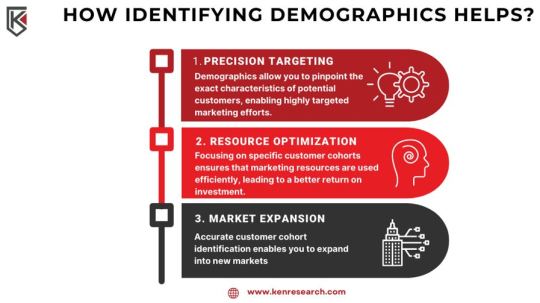
For example, Apple identified a cohort that focused on a more budget-friendly iPhone option without compromising performance. So, they introduced the iPhone SE that targeted individuals who look for the latest technology in a smaller affordable package. That’s how Apple catered to a specific segment of the market after understanding this cohort’s preference for a compact and cost-effective device.
2. Psychographic Profiling:
Demographics are important but if you want to flourish in the market, it is not enough. You need to delve into psychographics- the attitudes, values, and lifestyle choices of your potential consumers.
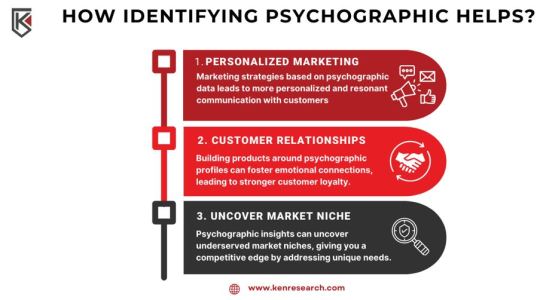
Lululemon, the activewear brand that is known for its premium women’s activewear, diversified its product line to include men's activewear as well. It is because they recognized the rising cohort of health-concern males seeking stylish yet comfortable workout apparel. That’s how Lululemon tapped into a previously underserved segment, and capitalized it.
3. Behavioral Patterns:
The third comes to behavioral patterns. It is another important way to determine the right cohort. Examine consumer behavior to unleash some actionable insights. Just like Beyond Meat did.
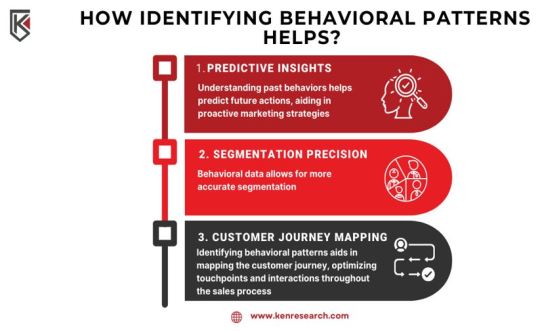
Beyond Meat analyzed a cohort of environmentally and health-conscious individuals who were looking for alternatives to traditional meat. That’s when they launched plant-based burgers that replicate the exact taste and texture of meat. This also addressed sustainability and health which became one of the attributes behind the success of Beyond Meat. They wonderfully created a product line that served the requirement for ethical and nutritious food options.
4. Pain Point Prioritization:
Addressing the pain point of your customer and offering them the right solution is the best way to thrive in the market. Hence, identify the issues or challenges that your services or products can resolve just like Peloton did.
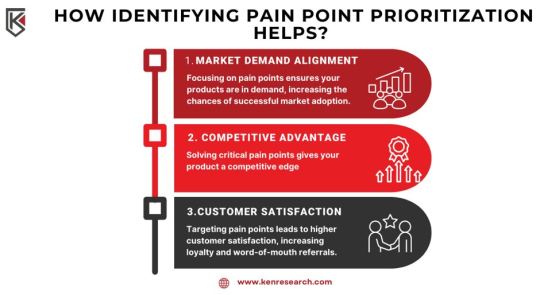
Wish to know the pain points of your consumers? Book a free discovery call with Market experts
It recognized a cohort of fitness enthusiasts who seek a convenient and engaging place for workouts and that’s it. Peloton launched a wide range of connected exercise equipment and online classes that cater to consumers who prefer personalized fitness experiences from the comfort of their homes. This resulted in the rapid growth and success of the brand.
However, not everyone gets lucky in tapping the whitespaces in the market. That’s why over 500+ CXOs chose Ken Research to enable them to identify the consumer’s challenges and make a successful business by offering solutions to those issues.
Do you also wish to determine the pain points of your targeted consumers and build a thriving business? Visit the website now or fill in the details to receive a Free 30 minutes of call with Ken Consultants today.
5. Social Influences and Networks:
While you are trying to find out cohorts, it’s important to consider the social dynamics that may influence your key audience or clients.
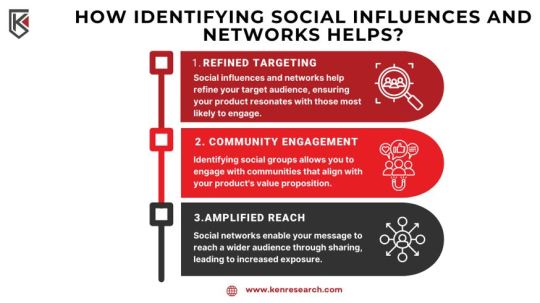
Casper an e-commerce company that sells sleep products online and in retail locations, spotted a cohort of young adults, especially millennials who appreciated convenience and a seamless online shopping experience. And there they disrupted the whole mattress industry by launching memory foam mattresses in a compact box and leveraging a direct-to-customer model. This helped Casper gain a strong foothold in the market simply by offering this cohort’s preferences for hassle-free purchasing.
To sum it all up, understanding your consumer cohorts is an excellent way for launching a successful new product line. Several brands have demonstrated the impact of applying these strategies in various contexts and you can do it. Just make use of data, understand psychographics, focus on customer behaviors, address their pain points, and not to forget, consider their social dynamics. Doing this will surely help you tailor your strategy to resonate with a specific group and make a significant business impact. In case, you need some consumer data to back your business strategy, consider Ken research to get some authentic customer insights. Visit the website now.
2 notes
·
View notes
Text
Do you know Best profitable small business ideas?
Have you ever dreamt of starting your own business and achieving financial independence, all while being able to work from the comfort of your home with your family? If you thought that such dreams were impossible due to the high cost of starting a business, we have good news for you! Fulfilling your entrepreneurial dreams is possible through profitable small businesses that require low investments.

In this article, we'll introduce you to some excellent ideas for profitable businesses that you can start right away without leaving your home. To make the most of these opportunities, it's essential to research different segments to find the most lucrative options.
1. Jarred Foods
With people's busy lifestyles, the demand for nutritious and portable foods is on the rise. Jarred foods, such as cakes, salads, fruit salads, cookies, cheesecakes, and more, are not only attractive in appearance but also hygienic and recyclable. You can choose from various food options based on customer demand and expand your business gradually. The initial investment is minimal, primarily covering the cost of products, packaging, and labor.
2. Phone Repair and Maintenance
The ubiquitous use of cell phones makes phone repair and maintenance a Best profitable small business. Many individuals prefer to repair their existing phones rather than purchasing new ones due to the cost factor. You can invest in a reputable online course to learn and specialize in cell phone repair. Starting by fixing phones for friends and family can help spread the word about your services.
3. Commemorative Baskets
Selling commemorative baskets presents another profitable opportunity. You can start by investing in basic supplies like baskets and products. The advantage here is that you don't need to maintain a large stock. As orders come in, you can buy the necessary items for each basket. Get creative with assembling baskets for different occasions like birthdays, Mother's Day, Father's Day, Easter, Valentine's Day, etc. Photograph your creations to showcase them to potential customers on social media.
4. Home-based Beauty Services
The beauty industry has always been in demand, and you don't need to own a salon to enter this field. Offering services like manicures, pedicures, makeup, massage, haircuts, hair removal, skin treatments, eyelash placement, and facial massages can be done from your home. By investing in accessible professional courses, you can acquire the skills needed to offer these services in a safe and qualified manner.
5. Fitness Lunch Boxes
As the demand for healthy and balanced diets rises, fitness lunch boxes have become popular. Many people don't have time to cook and prefer buying ready-to-eat, nutritious meals. You can capitalize on this trend by producing and selling delicious fitness lunch boxes. Promote your products on social media with enticing photos and menu suggestions.
6. Children's Crafts
Handmade crafts are increasingly valued, especially in the children's market. Whether it's crochet or knitted clothes, personalized crib protectors, themed rugs, booties, bows, tiaras, ornaments, souvenirs, hygiene kits, or maternity bags, the possibilities are vast. Children's crafts often sell at a premium due to their adorable and delicate nature.
Remember, the key to a successful small business lies in providing high-quality products or services that meet your customers' needs and expectations. Focus on customer satisfaction, as happy customers can become your best advocates and help grow your business. Read more: Blog4world
#business#strategies#startup#finance#industry#business ideas#business solutions#business planning#business growth#business intelligence#profitable#profitable business#best business setup company in dubai
2 notes
·
View notes
Text
How to Start a Food Processing Business: A Complete Guide

Are you interested in launching a business that processes food because you have a strong passion for it? Starting a business that processes food is a terrific way to make your passion profitable. But launching a company that processes food can be challenging and needs careful planning and preparation. We will provide you a step-by-step explanation of how to launch a food processing business in this manual.
Introduction :
It's critical to comprehend what food processing is before getting into the technicalities of launching a firm in this industry. Processing food entails converting basic materials into finished goods. Cooking, baking, canning, freezing, and packing are some examples of this.
The food processing sector is significant and expanding, with a $4 trillion global market. The industry is divided into a number of subsectors, including those that prepare meat and poultry, dairy products, fruits and vegetables, and snack foods.
Market Research :
Before starting any business, it is important to conduct thorough market research to determine if there is a demand for your product. In the case of food processing, you will want to research the industry trends, consumer preferences, and competitors in your market.
Some key questions to consider during your market research include:
- What are the current trends in the food processing industry?
- Who are your competitors and what are their products and pricing strategies?
- Who are your target customers and what are their preferences?
- What are the regulatory requirements for starting a food processing business in your area?
Business Planning :
Once you have conducted your market research, it is time to develop a business plan. A business plan is a document that outlines your business goals, target market, products and services, marketing and sales strategies, financial projections, and more.
Your business plan should include the following sections:
- A concise explanation and description of your business and its goals
- Market research is the analysis of your competitors, target market, and current market trends.
Services and products a list of the products and services you provide
- Sales and marketing plans: How you plan to promote and market your products.
- Budgetary goals: a projection of your expenses and income for the ensuing three to five years.
Financing :
Starting a food processing business can be expensive, so it is important to have a solid financing plan in place. There are a variety of financing options available, including loans, grants, and investors.
Some key factors to consider when seeking financing include:
- How much capital do you need to start your business?
- What is your business credit score?
- Do you have collateral to secure a loan?
- Are there any grants or incentives available in your area?
Equipment and Supplies :
Once you have secured financing, it is time to purchase the equipment and supplies you will need to start your business. The specific equipment and supplies you will need will depend on the type of food processing business you are starting.
Some common equipment and supplies needed for a food processing business include:
- Processing equipment, such as ovens, mixers, and blenders
- Packaging equipment, such as sealers and labelers
- Storage equipment, such as refrigerators and freezers
- Ingredients and raw materials
Developing a Product Line :
Your ability to sell your products will have a big impact on how well your food processing company does. It's critical to have a product lineup that appeals to your target market and distinguishes you from your rivals.
Keeping the following things in mind will help you design your product line:
- Your target market's preferences and needs
- The price point of your products
- The packaging and labelling of your products
- The shelf life of your products
- The availability of ingredients and raw materials
Marketing and Sales :
Once you have developed your product line, it is important to develop a marketing and sales strategy to promote your products. Your marketing and sales strategy should be tailored to your target market and should aim to differentiate your products from those of your competitors.
Some key marketing and sales considerations include:
Developing a brand identity and messaging that resonates with your target market
Identifying your distribution channels, such as retail stores or online marketplaces
Developing a pricing strategy that is competitive but still profitable
Creating a promotional plan, such as social media advertising or email marketing campaigns
Legal Compliance and Safety :
The operation of a food processing firm requires adherence to numerous regulatory and safety requirements. Depending on the kind of food processing business you're beginning and where it's located, you'll need to adhere to a certain set of rules.
Among the most important legal and safety factors are:
securing the authorizations and licences required to run your enterprise
observing food safety guidelines, such as those established by the FDA and USDA
planning a HACCP (Hazard Analysis and Critical Control Points) strategy
upholding sanitization and hygiene standards
ensuring that your staff is educated on proper food handling and safety practices
Conclusion :
Although it requires careful planning and preparation, starting a food processing business can be a rewarding and profitable venture. You can improve your chances of success by carrying out in-depth market research, creating a strong business plan, obtaining finance, buying the essential tools and materials, developing a product line, and putting a marketing and sales strategy into action. The health and safety of your clients and staff are also dependent on your ability to adhere to legal and safety requirements. You can convert your love of cooking into a successful business with the correct preparation and execution.
2 notes
·
View notes
Text
Chobani Innovation
Chobani is on the innovation train again! In recent news, they have made it known that they are trying to implement a diversification strategy and to enter into new markets other than the one they have built a 1 billion dollar business on which is Greek yogurt. What I found in the article above is Chobani is taking a cautious approach to break into more food and beverage categories as the New York-based company prioritizes innovation in core product lines where it has a strong market presence. The main markets that they want to further expand into are oat milk, cold brewed coffee, probiotic beverages, and coffee creamers. Some examples of their oat milk options can be seen below.
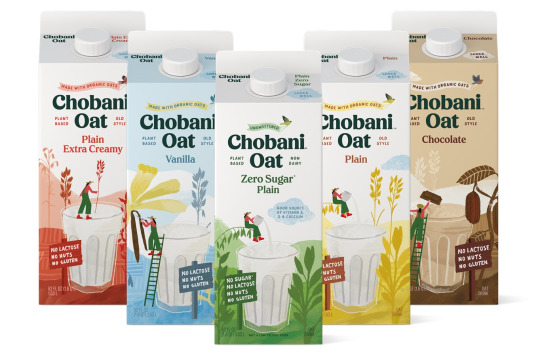
So what exactly does it mean when a company is looking to diversify? After doing some additional research I found using the link below explained that diversification is a growth strategy that involves
entering new product or service markets that are distinct from the company's existing offerings. This strategy is often pursued to reduce risk by spreading investments across multiple product lines or markets, as well as to capitalize on new opportunities for growth. Chobani is smart in trying to implement this strategy because they are trying to reduce risk and become aware of the fact that at some point their main selling product Greek yogurt will take a dip and that they want to have other options. In other words, they do not want to put all of their eggs in one basket and want to have many baskets with some of their eggs in each one.
Question: What motivated the decision to expand your product offerings beyond Greek yogurt, and how do you ensure that new products align with your brand values and meet consumer demand?
2 notes
·
View notes
Text
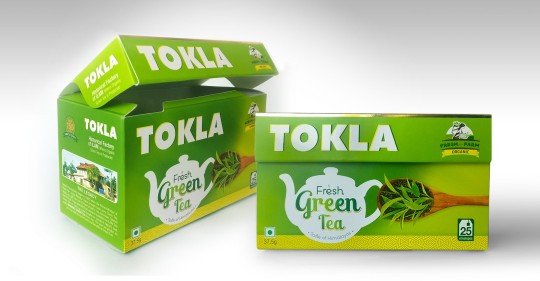
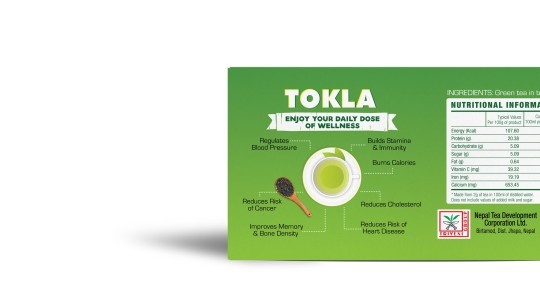

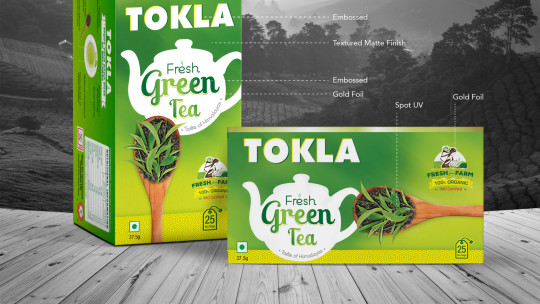
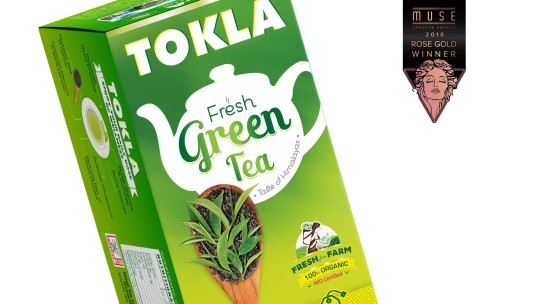



Almond Branding, a well-known design and branding agency in india, has taken on the task of redesigning the packaging and branding for a 150-year-old green tea brand from Nepal. This brand carries with it a rich heritage and history that has been passed down through generations, making it an important part of the Nepalese culture.
The challenge for Almond Branding was to create a design that reflected the brand's rich history while also appealing to modern consumers. They needed to strike a balance between maintaining the brand's traditional values and updating the design to make it more appealing to today's market.
To achieve this, Almond Branding conducted extensive research into the brand's history and heritage, as well as the current market trends in the tea industry. They used this information to create a design that incorporated traditional Nepalese elements, such as the country's iconic Himalayan mountains and intricate patterns, while also using modern typography and color schemes to make the packaging more visually appealing.
The result is a beautiful and elegant packaging design that pays homage to the brand's heritage while also appealing to a modern audience. Almond Branding has managed to create a design that is both visually stunning and deeply meaningful, capturing the essence of the brand and its history. This is a testament to the agency's creativity, attention to detail, and commitment to preserving the value of a brand's heritage.
Revamp Of Nepal's 150 Year Old Tea Brand
The Brand Tokla is as old as the tea industry in Nepal. With this 150 year old heritage, its not surprising that the name Tokla has become synonymous to tea or Chia as its locally known in Nepal.
The brand has a variety of offerings from regular CTC tea, premium long leaf, Masala tea and the likes and has recently ventured into Green tea to reach out to the rapidly growing health conscious audience in the Himalayan country. However, the packaging of Green tea badly needed a facelift inorder to appeal to this slightly different discerning audience.
Decoding The Brand Equity
There has been a few attempts made locally to modernize the pack but they had failed miserably, each time resulting into dip in sales as they had swayed away too much from the family of Tokla.
The range from Tokla had a characteristic dark green colour with Tokla branding in white and our research showed that the masses in Nepal identified the brand with this colour codes. We also observed that there is a ‘not-tobe-missed’ white teacup right at the centre of each pack.
The key challenge was not to deviate far from the parent Tokla Design language and yet connote the modern and premium offering to an evolved audience.
The Design Solution
Our proposed approach was three fold
Retain brand Tokla boldly on green at top Take advantage of Trust & Heritage as well as familiarity
Bring in premiumization with design elements and a strong Visual Hook for recall Reach out to the evolved sensibilities of the evolved consumer
Convey the Freshness and Organic certifications and claims on Front of Pack(FOP) Back it up with health benefits on the Back of Pack (BOP)
Design Inspiration : Elements & Patterns
Almond Branding used its proprietary Brand Nomenclature process to coin a new Brand Name that will stand true to the ethos of the company. The company with its strong focus on technology and consumer centricity has been striving to bring the most innovative offerings to the consumer
Category: Food & Beverage Services: Branding | Packaging Design
2 notes
·
View notes
Text
Best Skincare Manufacturers
Aadhunik Ayurveda is India’s leading skincare manufacturer known for its quality production and affordability. We are the manufacturer, wholesaler, suppliers & exporter of organic skincare products at economical prices as there are no middle men involved with us. If your are looking for skincare and personal care manufacturer for a unique product idea & custom formulation to maintain your brand value and need to accelerate your business growth in the market, so Aadhunik Ayurveda is the right place to provide you accurate service with 100% surety of quality & accuracy with the core dedication of our experienced team.

What We Offer
We have served our services as private label & third party manufacturing successfully with more than thousands of customers with Zero errors & complaints, which help us to be Top Skincare Manufacturer in India. We support you in accordance to your requirement as you need customized product in personal care manufacturing, skincare manufacturing, private label manufacturing in India.
We are specialized in the manufacturing, Research & Development of products. As a best USDA certified skincare products manufacturer in India, we work with dedication on each project to give it a complete tangibility as per the brand. Our moral is to give the best quality natural organic skincare care products with goodness of Ayurveda, the deep-rooted Indian Science using plant-derived ingredients, mixed with the traditional formulation and individual aroma. Our formulation has the best quality assurance, and always created to meet highest standard and international guidelines.
We have vast experience in manufacturing ayurvedic skincare, personal care, hair care and other wellness products. All of the products we produce are natural and organic, and they all meet the high standards that the customers and the industry have set.

Skincare Products Range at Aadhunik Ayurveda
Aadhunik Ayurveda has developed various cosmetics and Ayurvedic products to offer private label manufacture. We provide our clients with a huge variety of items in the categories of
Herbal Products, Skincare, Haircare, Bath & Body Care, Personal care, Man care, Baby care, Cold-processed soaps, Essential Oil, Aromatherapy, And other Wellness products.
With an extensive range of products and services, Aadhunik Ayurveda is the one and only leading skincare care manufacturer that has carved a niche for itself globally.
Our services span a diverse spectrum. Bring us your requirements and we’ll handle the rest with customized manufacturing and packaging services just the way you need them.
Why Choose Aadhunik Ayurveda?
With the world class facility, Aadhunik Ayurveda is the favored manufacturer because
We have many year of experience
Fully developed in-house laboratory
Simple and transparent working process
Certified organic ISO, FDA, GMP etc.
Private label/White label services
Custom formulation
Skilled team of personnel
Provides raw material to various brands for use in their products
Comprehensive basket of 2000+ products (Ayurvedic herbal products, Personal care, Food Products and other wellness products)
In order to get authentic and high-quality ingredients, Aadhunik Ayurveda has strong connections with farmers cultivating nuts. seeds, herbs all over India. Aadhunik Ayurveda is one of the fastest growing skincare brands in India selling its products nationally and internationally on the pillars of purity, clean & green making technique hence it is certified organic processor. Whether you are looking to create high-quality manufacturing of skincare products, we guide our customers through the entire process and assist them to establish a successful brand.
#Top Quality Manufacturer#top exporter#top supplier#Organic#Natural#Private Label Manufacturer#skincare products manufacturer
5 notes
·
View notes
Text
article in full below the cut (it’s ridiculously short)
We’re finally reckoning with our expensive subscription habits.
For two straight quarters, cancellations have outpaced new subscriptions for digital memberships, food-of-the-month clubs and a host of other purchases, according to personal finance app Rocket Money. Streaming services have been particularly impacted, with cancellations for Netflix, Hulu and HBO Max and others up 49% in 2022 from the previous year, according to subscriber-measurement firm Antenna.
“People are taking stock of their subscriptions and trying not to make the same mistakes they made in 2022 given that budgets are getting a lot tighter,” said Courtney Alev, consumer financial advocate at Credit Karma.
The decision to cancel had been building up for some time, financial analysts said. Even though inflation cooled last month to its lowest level in nearly two years, budgets continue to be squeezed by higher prices.
About a third of respondents to a December Credit Karma survey said their biggest financial mistake last year was paying for services they never used. Americans were also paying about $133 more than the $86 they thought they were paying for subscriptions each month, according to a 2022 survey from market research firm C+R Research.
Retiree John Ritzinger, 72 years old, said canceling subscriptions he never used would spare him needing to penny pinch at the grocery store.
First to go was the satellite radio in two cars he never drove, saving him $45 a month. Next, the MotorTrend magazines that lived in an unread stack on the coffee table and a $1,000 annual, dining-only membership to his local Dayton, Ohio, country club in favor of ordinary restaurants. Stopping the $750-a-year pest control service was more of a debate with his wife.
“But if we get a bad enough infestation I figure we just burn the house down anyway,” he joked.
He’s putting off his call with the cable company to deactivate the land line he always ignores and downgrade his package until he’s socked away enough patience for an hourslong customer service call.
Taking on subscription overload
A new proposal from the Federal Trade Commission could make it simpler to break up with your subscriptions. The consumer watchdog wants to require merchants to make it as easy for customers to cancel as it is to sign up, often with just a single click.
Apps that help people take stock of their recurring payments such as Rocket Money and ScribeUp aren’t worried a new FTC rule will cut into their user base.
Over the past year about 70,000 people have downloaded ScribeUp, a new service that provides a credit card number to use only for recurring payments.
Chief commercial officer Erica Chiang said she wanted to give people a way to automatically opt-in, rather than out, of renewals after having to jump through hoops to cancel subscriptions as a consumer. The card will automatically cancel subscriptions on a user’s behalf if she doesn’t actively choose to continue.
At one point, Ms. Chiang said she had to travel from Los Angeles to New York to end a monthly gym membership after learning she could only cancel in-person at the gym where she signed up.
When Dylan Kenney conducted an audit of his spending after too many months in a row of wondering where his paycheck was going and hoping to save up for a house, he realized he was somehow paying for two separate Amazon Prime accounts.
Though he’s not trying to recoup the money he lost, he did save $270 a month by combining streaming services with his partner and canceling his weekly HelloFresh meal box, which he said had him paying $150 a month more for groceries than going to the store himself.
“I wasn’t really thinking of all the minor charges coming out of my account every month,” said the 27-year-old, who works for an aviation consulting firm in Arlington, Va.
One ScribeUp user, 46-year-old LaKisha Mosley, paid for a subscription to health club aggregator ClassPass for over four years without realizing it, adding up to over $5,000.
“I can count on one hand the amount of times I actually logged in,” she said.
Ms. Mosley said she wasn’t able to get the money back, and that she expected ClassPass to let her know when her subscription was coming up for renewal, which never happened. She’s heartened, however, to see more companies starting to send alerts before a charge comes up.
“When members sign up for ClassPass, they are notified that their memberships automatically renew on the same day each month,” a company spokeswoman said, adding that ClassPass sends reminders when members haven’t used their accounts to book classes.
Companies rethink subscriptions
Some companies are shifting their business model to meet changing consumer feelings about subscriptions.
Among them is Bark, which was founded in 2011 as a monthly box of dog treats and toys and has since expanded to sell a la carte. The company recently laid off 12% of its staff and said it would invest more in non-subscription products.
“These are always difficult decisions, however, we believe that it was the right direction for the business, and it better aligns our cost structure with the current economic environment and allows us to better focus on our highest priorities, which are profitability and growing our consumables business,” Chief Executive Matt Meeker said in an emailed statement to The Wall Street Journal
HelloFresh said on its most recent earnings call that it expects its number of active customers to decline in the first half of 2023, after dropping to 7.1 million in the fourth quarter of 2022 from 8 million in the third quarter.
Evanston, Ill., restaurant Soul & Smoke launched a meat of the month box in 2020, but recently made the decision to discontinue the offering amid waning interest.
“It made more sense to get rid of it and focus on the other things we were doing,” said co-owner Heather Bublick, pointing to a new bricks-and-mortar location and live events.
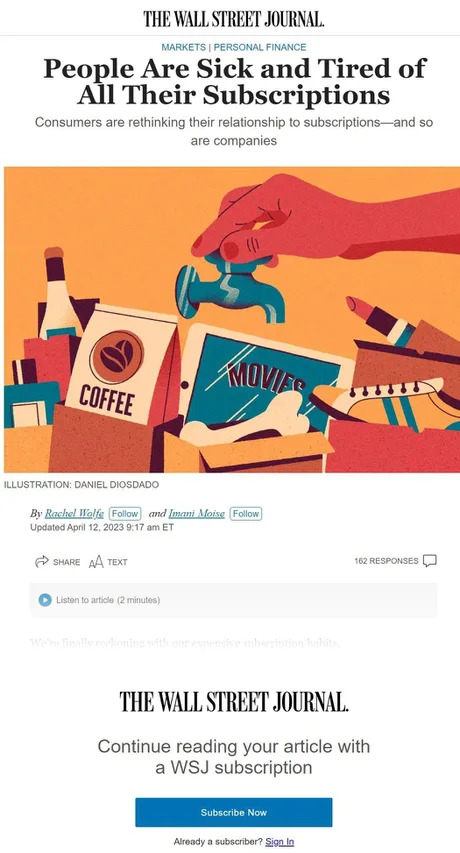
62K notes
·
View notes